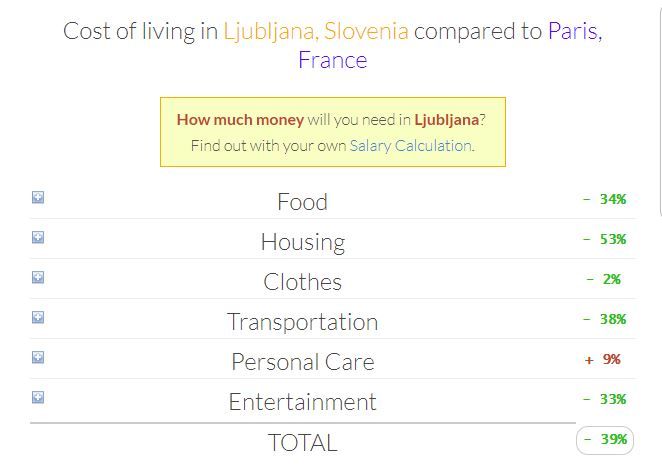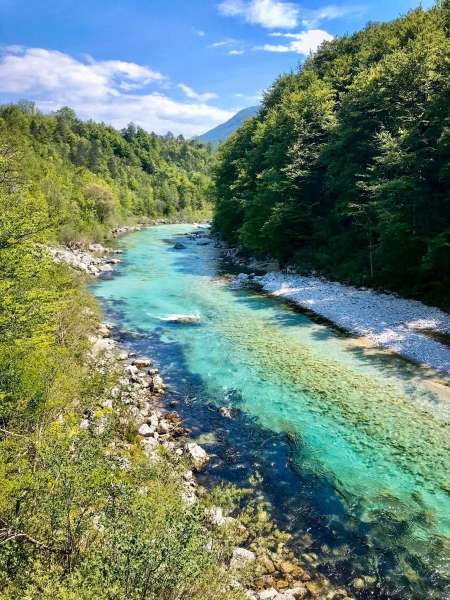Ljubljana related
STA, 8 December 2018 - More than one billion passengers travelled by air in the EU last year, which is 7.3% more than the year before and 39% more than in 2009. The highest growth was recorded in Slovenia, where the number of passengers rose by 19.8% to 1.682 million, latest Eurostat data show.
Slovenia was followed by Luxembourg, Estonia, Bulgaria and the Czech Republic.
The Ljubljana Jože Pučnik Airport was listed as the 150th busiest airport with 1.682 million passengers, mostly travelling within the EU.
The busiest airport in the EU was London's Heathrow with 78 million passengers, followed by Paris's Charles de Gaulle with 69 million and Amsterdam's Schiphol with 68 million.
The UK recorded the highest number of passengers (265 million), followed by Germany (212 million) and Spain (210 million). Some 47% of the passengers flew within the EU and one in five passengers travelled within their own country.
A PDF of the report can be found here, while an interactive version of the full dataset it here
November 14, 2018 - The cost of living in Ljubljana is a tricky subject, made more so to comparing it to the cost of living in another, very different city, to say nothing of the varied lifestyles folk lead, and how this changes as we get older. That said, such figures remain a subject of obvious interest to all those with a more international mindset, as they imagine what life would be like in London, Berlin, Tokyo, New York or Ljubljana. How far their current income and savings would go, and whether a move would require – or enable – significant changes in preferences, tendencies and habitual behaviors.
The cost of living in Ljubljana compared to other European capitals
It’s here the website Expatistan comes in handy, as it uses survey data (details here) to create a ready-reckoner for the relative expense of living abroad, as well as to provide details of the salaries associated with various jobs. While we can’t vouch for the exact precision of the answers, the results do seem to give a pretty good idea of how much it costs to live in Ljubljana compared to some other cities we’ve called home. Below you can see the details for a comparison of the costs of living in the Slovene capital with Paris.
Screenshots from Expatistan
As a further test of the system we entered a list of European capitals and a few other notable cities around the world to obtain the percentage difference in cost of living, with the results shown in the following table:

With hundreds of other cities in the system you can have hours of fun making comparisons and day-dreaming of a new career in a new town, as well as checking the relative salaries and looking for details of international schools, so if curious do look for more data at Expatistan.
Related: Find out the average pay for various jobs in Slovenia
If thinking about skin cancer then Australia doesn’t seem too surprising for the top spot in melanoma deaths across both sexes for the time period 2013 to 2015, being a sunny country with a strong beach culture and large population of pale skinned folk with genes that are better suited to Northern Europe. However, according to research presented on Sunday at the 2018 NCRI Cancer Conference in Glasgow , the #2 spot is more unexpected – Slovenia.
Related: Food, Alcohol, Sex, Marriage, Divorce & Death: Recent Statistics on Slovenia
The study, which examined cancer deaths in 33 developed countries in Europe, North America and Australasia, since they had the most reliable data, found that in Australia 5.72 male deaths were reported for every 100,000 men from 2013 to 2015, compared to 2.53 female deaths for every 100,000 women. In Slovenia the death rate among men was 3.86 per 100,000, while for women it was 2.58. The lowest death rates for melanoma were found in Japan, at 0.24 for men and 0.18 for women.
The report, published by the UK National Cancer Research Institute, can be read in full here (PDF), while the figures for all the countries included are summarized below. One notable finding about the data – more men die of skin cancer than women.

Data: UK National Cancer Research Institute
STA, 1 November 2018 - There were a total of 2,070,050 residents in Slovenia at the beginning of July 2018, which is 3,170 more than at the beginning of January, but the number of Slovenian citizens living in the country was down, while the number of residents with foreign citizenship increased.
The share of foreigners in the total population was up to 6.1%, with their number standing at 126,923, the Statistics Office has reported.
In the first half of the year, the number of Slovenian citizens living in Slovenia was down by almost 1,900, while the number of foreign citizens was up by more than 5,000.
At the beginning of July, there were 1,030,234 men and 1,039,816 women living in Slovenia. The share of women, which has been very slowly decreasing for a number of years, was 51.2%.
The share of women among the foreign citizens living in Slovenia was 34.9%. The share was up by 1.8 percentage points in the last four years.
Related: The places where foreigners live in Slovenia and where they come from
STA, 29 October 2018 - Slovenian households recorded one of the highest saving rates in recent years in 2017, with the average household saving EUR 1,750. At 13.9%, the gross household savings rate was also one of the highest in Europe, where the average was 9.9%, the Statistics Office said.
STA, 25 October 2018 - The average age of Slovenians who died last year was nearly 77.7, which compares to 68.8 in 1987, the latest data by the Statistics Office (SURS) show. Men die younger than women, while Mediterranean lifestyle appears to have a positive effect on health.
And large differences in the region in terms of average net wealth per adult.
Figures from the Statistical Office of the Republic of Slovenia (SURS) show that “consensual unions” – when a couple live together without a formal, legal relationship – are becoming ever more common, their number having increased by 7.1% since the start of 2015, a rise of 5,500. Consensual unions now represent 14.4% of all families in Slovenia, compared to just 2% in 1981, when such data was first collected.
STA, 16 October 2018 - Joining World Food Day calls to eradicate hunger globally, Agriculture Minister Aleksandra Pivec has highlighted the need for a change of practices in food production and environmental protection. Changes, albeit slow, are also under way in Slovenia, which produced 53% of the food available in the country in 2016.
STA, 16 October 2018 - The average Slovenian family spends EUR 1,500 on heating per year, according to a survey commissioned by Borzen, the power market operator. Central heating is still the most popular heating system in the country.









